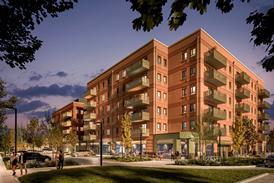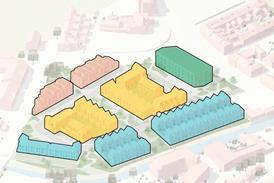Confidence is rising among the world’s top architects, but politics has a nasty habit of getting in the way
The results from the 2018 survey of the world’s top 100 architectural practices reveal a mixed picture. On purely numerical terms, the profession has declined for the second year running, the number of architects employed by the top 100 dropping by 2.7%. Once again, the top 10 bucked the overall trend, with numbers rising by 0.8%.
There are no big surprises among the top 10 – Gensler, Nikken Sekkei and Aecom remain in the top three spots. HKS is the only newcomer in the super league, on the back of years of steadily increasing growth.
Among the top 10, HDR gained the most architects with a 14% increase, followed by Aecom which has started to reverse last year’s dramatic drop of 609 architects with an 8% rise to 1,607, an increase it attributes to organic growth. Aecom has almost doubled its fee income in the space of a year and now takes more fees for purely architectural services than even the mighty Gensler.
At the other end of the scale, Aedas lost 10% of its architects, only remaining in the top 10 thanks to Woods Bagot dropping out of this year’s survey.
A big change is the positive mood in Western Europe, with 47% expecting to see growth. Unfortunately this new-found confidence doesn’t include the UK
Further down the list, there have been some spectacular growth stories. BIG has leapfrogged from 89th place to 49 on the back of a 27% rise in architects employed, which reflects the firm’s phenomenal success.
Despite the overall drop in numbers, architects are much more positive than last year. A healthy 76% believe there will be growth in the world construction economy compared with 60% in 2017. Architects put their confidence in the same countries as last year, with China at the top followed by the USA and India.
On a regional basis there has been a jump in confidence in the Pacific Rim, with 75% expecting to see growth compared to 64% last year. Faith in the USA’s growth prospects is unchanged, but regionally there has been a dent in confidence in the North American construction economy, with a 10 percentage point fall in the number of architects predicting growth (66%).
A big change is the positive mood in Western Europe – 47% expect to see growth, a big increase from 28% last year. Unfortunately this new-found confidence doesn’t include the UK. Only one global architect thinks Britain offers the most potential growth for architectural services. The uncertainty around Brexit is a big factor – the latest RIBA survey reveals collapsing confidence about future work prospects among London architects, reflecting commercial clients’ concerns that international firms may choose to relocate to mainland Europe, reducing the need for office space.
Increased confidence shows up again in recruitment intentions, with only one firm saying it had no plans to recruit during 2018. The number of firms expecting to hire over 50 architects was up from 10% to 13%, while those intending to hire 31–50 architects rose from 13% to 18%. Architects are also keen to retain staff – 54% have no plans to let any architects go over the next 12 months compared to 47% last year.
This is all good news but, as in the past two years, it is tempered by uncertainty. In early December the International Monetary Fund warned that the Chinese economy was dependent on dangerous levels of debt, comparing it to the USA before the 2007 crash. The outcome of the Brexit talks is highly uncertain and President Trump’s reputation for unpredictability remains undimmed, with his recent recognition of Jerusalem as Israel’s capital threatening to plunge the Middle East into yet deeper chaos.
Against this background, those practices that are most diverse in the work and markets they operate in are best placed to weather any storms that might blow in during the next 12 months.
How the charts were compiled
The data for the rankings and tables in this publication was gathered by UK communications agency Camargue on behalf of BD. Details and listings are the results of a survey sent out to 1,250 architecture practices worldwide in October 2017 and analysed the following month. The listings contained within this publication are therefore based on declarations from the practices themselves.
2018 survey
To take part in next year’s survey, contact Lars Jespersen: ljespersen@camargue.uk +44 (0) 1242 577 277
















No comments yet